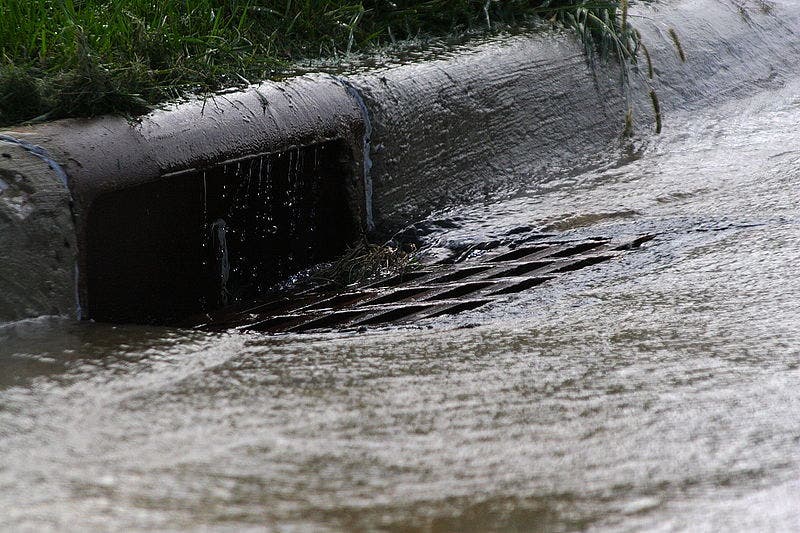New research aims to bring stormwater to a cup near you.

Researchers at the University of California, Berkeley have devised a new method of cleaning and decontaminating stormwater, an innovation they hope will help millions in water-stressed communities.
Clean as a whistle
The team’s approach involves passing stormwater through mineral-coated sand. The sand itself helps filter larger particles (similarly to natural filtration systems) while the newly-developed coating reacts with and destroys organic pollutants. The team reports that the sand can be used to purify stormwater percolating (draining) into underground aquifers, so it could be used to create reservoirs of safe drinking water for displaced communities. Alternatively, the material can help water-stressed communities tap into an abundant source of hydration.
“The way we treat storm water, especially in California, is broken. We think of it as a pollutant, but we should be thinking about it as a solution,” said co-author Joseph Charbonnet, a graduate student in civil and environmental engineering at UC Berkeley.
“We have developed a technology that can remove contamination before we put it in our drinking water in a passive, low-cost, non-invasive way using naturally-occurring minerals.”
While rainwater may seem attractive to the parched, it’s usually (in cities especially) quite dirty. As it rains down over roofs, streets, even trees or lawns, it gets mixed with chemicals — herbicides, pesticides, toxic metals — and substances ranging from car oil to pet droppings.
Compounded with the fact that excessive stormwater can pose a lot of problems to a city, it’s usually routed and discharged to rivers and streams as quickly as possible.
Charbonnet’s team hopes that directing all that water through sand into underground aquifers could instead benefit cities — especially those in dry or relatively dry environments such as Los Angeles, they write. Like giant rain barrels, aquifers can be filled during periods of intense rainfall and then store water until it is needed in the dry season.
Some cities already use stormwater reclamation, albeit on a smaller scale. Current approaches involve constructs such as bioswales and rain gardens, which funnel stormwater through sand or mulch to remove debris and prevent surface runoff. Charbonnet is already working with the local community in the Sun Valley neighborhood of Los Angeles to transform a 46-acre gravel pit into a wetland and water infiltration system for stormwater.
“Before we built the buildings, roads and parking lots that comprise our cities, rainwater would percolate into the ground and recharge groundwater aquifers,” said co-author David Sedlak, professor of civil and environmental engineering at UC Berkeley, who is also involved in the Sun Valley project.
“As utilities in water stressed regions try to figure out how to get urban storm water back into the ground, the issue of water quality has become a major concern. Our coated sands represent an inexpensive, new approach that can remove many of the contaminants that pose risks to groundwater systems where storm water is being infiltrated.”
Charbonnet and his team mixed plain sand with two forms of manganese that react to form manganese oxide. This mineral binds to organic chemicals and breaks them down into shorter molecules — which tend to be less toxic and break down more readily. The resulting manganese-oxide-coated sand, a dull brown in color, is perfectly safe and poses no risk to the environment, the team notes.
Although the coated sand doesn’t remove all types of contaminants, it may be used in conjunction with other water purification systems to remove many of the contaminants that water picks up, Sedlak said.
The team pitted their sand against simulated stormwater containing a low concentration of BPA (bisphenol-A, and endocrine-disrupting organic compound), percolated through columns of the material. The coated sand removed nearly all of the BPA, in the initial phases, but lost its effectiveness over time. The team says the sand can be ‘reset’ by mixing it with a diluted (25 parts per million) chlorine solution. Recharging the sand this way restored all of the manganese oxide’s initial reactivity.
“If you have to come in every year or two and dig up this sand and replace it, that is incredibly labor intensive, so in order to make this useful for community stakeholders it’s really important that this stuff can be regenerated in place,” Charbonnet said.
He estimates that it would take around two days to recharge a half-meter (1.6 foot) layer of sand using the chlorine solution.
Next, the team plans to perform field tests in Sonoma County using stormwater from a local creek.
The paper “Chemical Regeneration of Manganese Oxide-Coated Sand for Oxidation of Organic Stormwater Contaminants” has been published in the journal Environmental Science & Technology.






